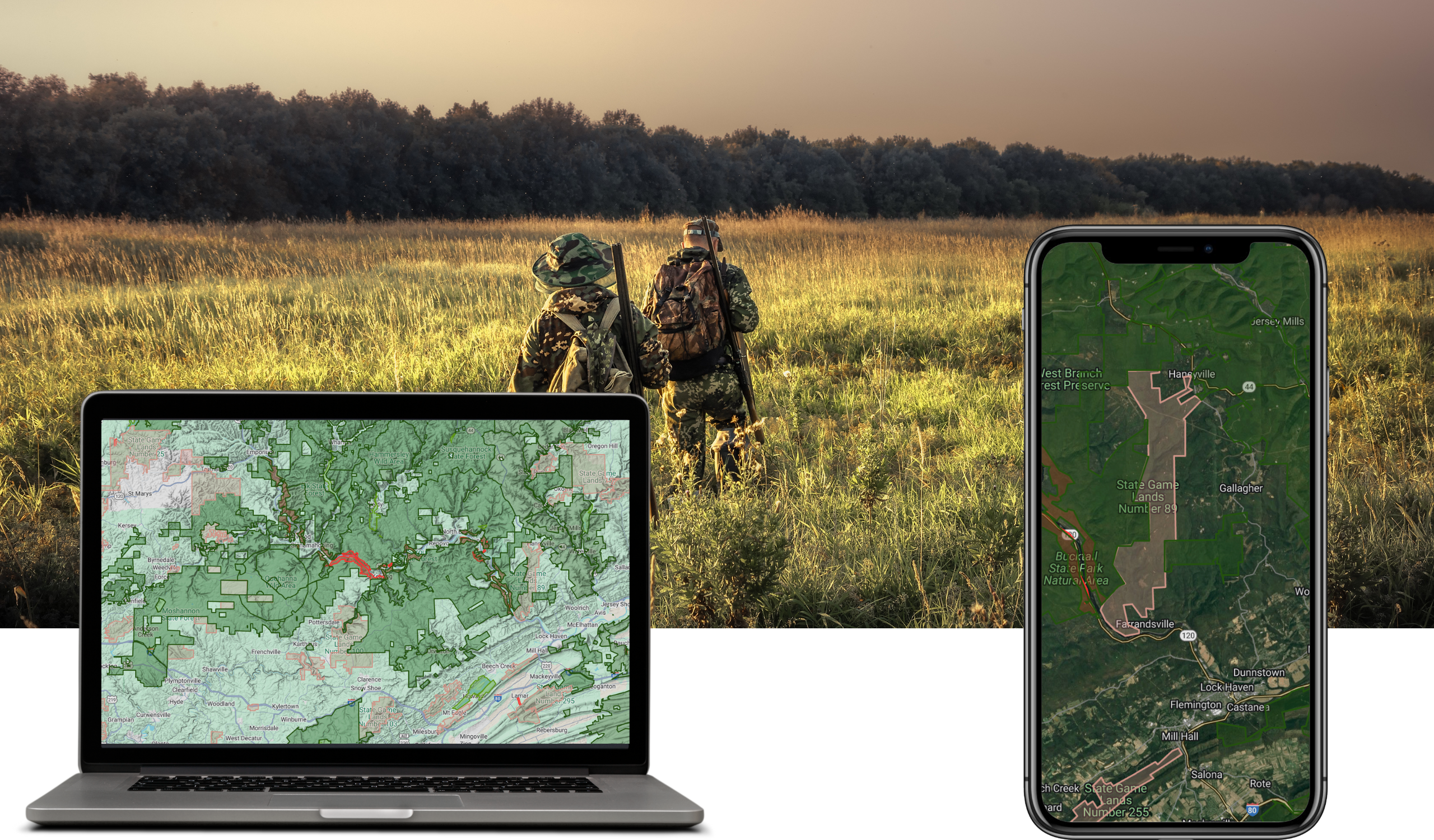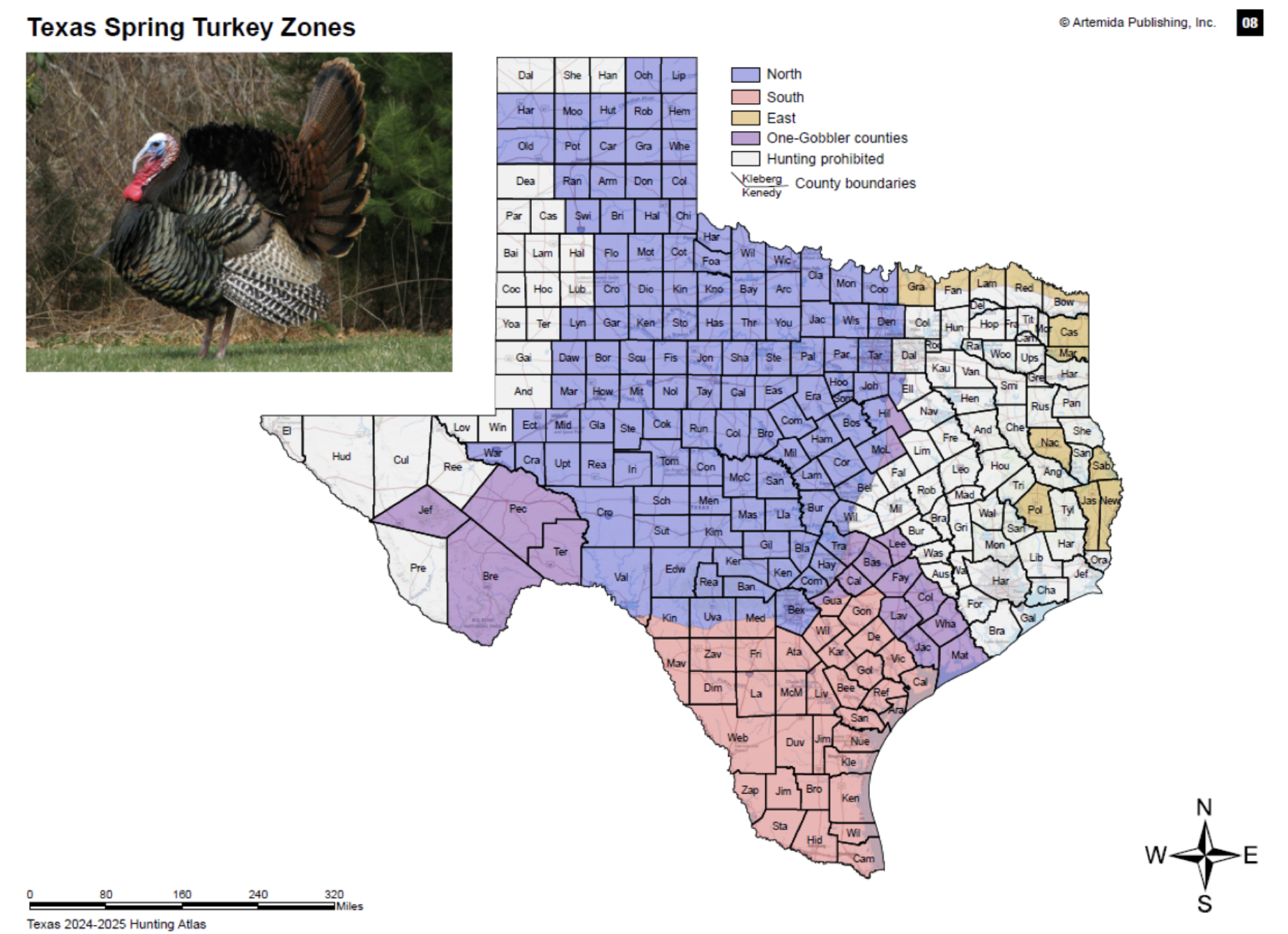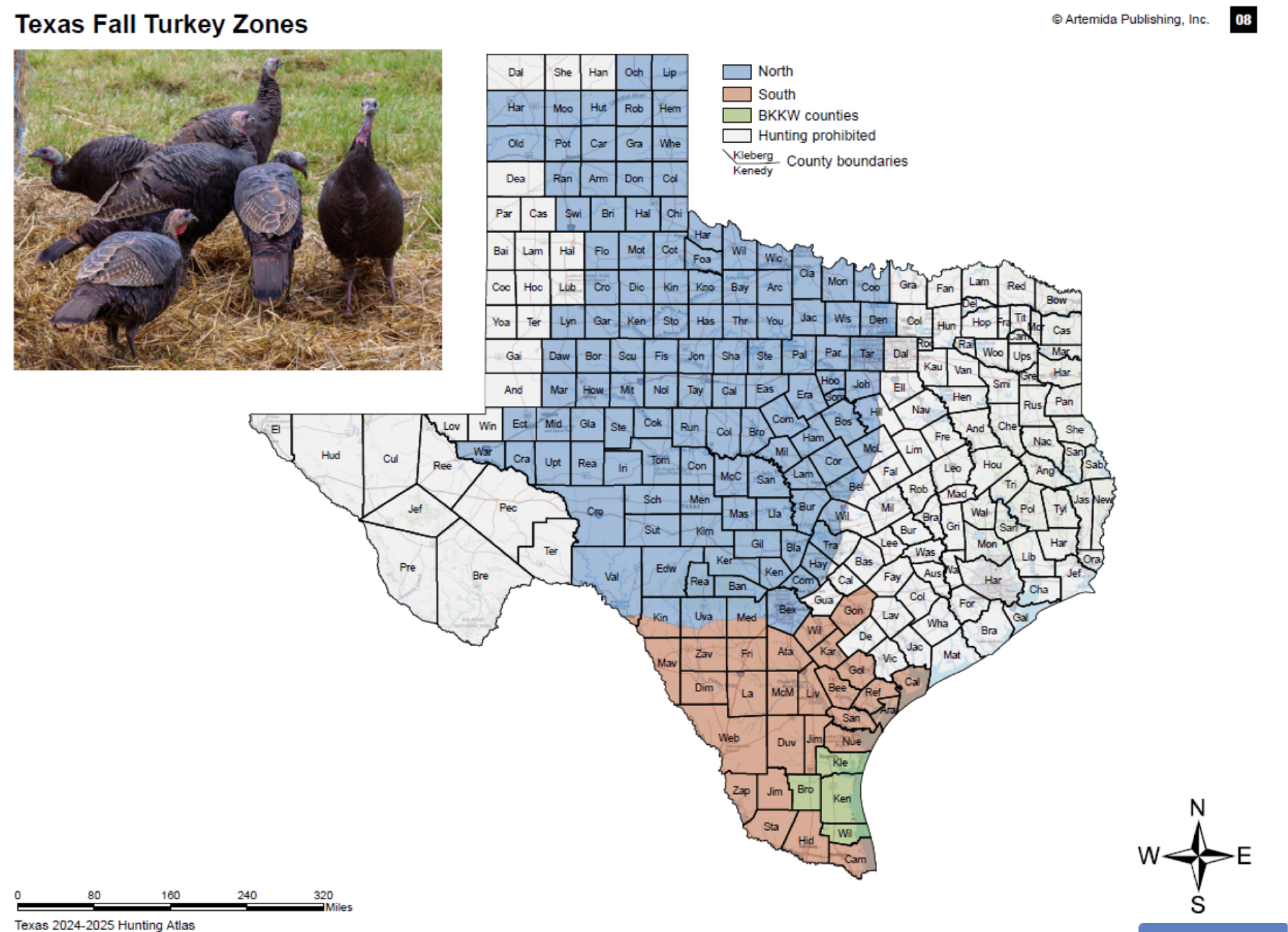If you’re a turkey hunter in Texas, you know the state offers some of the best opportunities in the country. With diverse landscapes, thriving populations, and long seasons, Texas is a turkey hunter’s paradise. But if you’re planning a hunt, you’d better do your homework—because the rules change depending on where you are. From different bag limits to varying season dates and even the type of turkey you can hunt, the state is split into multiple hunting zones, each with its own set of regulations.
Keeping track of it all can be overwhelming, but that’s where HUNTERIZER MAPS comes in. Instead of digging through endless PDFs or state websites, Hunterizer gives you real-time information on what you can hunt and where you can hunt it. Whether you’re in the field or planning a trip, you’ll always know the latest regulations at a glance. Here’s what you need to know before you head out.

Rio Grande vs. Eastern Turkey: Know Your Birds
Texas is home to two wild turkey subspecies:
- Rio Grande Turkey – The most common turkey in Texas, found primarily in the central, western, and southern regions. These birds thrive in open scrub, mesquite, and river-bottom habitats.
- Eastern Turkey – Much rarer, found mostly in the Piney Woods of East Texas. They require different habitat management and, because of that, have stricter hunting regulations.
Why does this matter? The state manages these two birds differently, meaning regulations vary drastically depending on whether you’re hunting Rios or Easterns.
Compare Spring and Fall Turkey Maps Below


Breaking Down Texas’ Turkey Hunting Zones
Texas is split into multiple turkey hunting zones, each with its own season dates, bag limits, and rules.
North and South Zones (Rio Grande Turkey)
For most of the state, turkey hunting is pretty straightforward, with seasons divided into the North Zone and South Zone for Rio Grande turkeys.
- North Zone: Spring season usually runs from late March to mid-May.
- South Zone: Starts earlier, typically from mid-March to late April.
The key difference? The South Zone kicks off earlier due to warmer temperatures, which means gobblers start breeding earlier than they do up north.
Fall seasons also exist in select counties, allowing turkey harvests in the fall deer season, usually with a one-bird either-sex bag limit.
One-Turkey Bag Limit Counties
Some counties, especially those on the eastern edges of the Rio Grande turkey range, have a one-bird limit per season. These areas are managed more conservatively to ensure healthy populations.
- Examples: Bastrop, Caldwell, Colorado, Fayette, Jackson, Lavaca, Lee, Matagorda, Milam, Wharton.
- Tip: If you’re used to hunting in a county with a four-bird annual bag limit, don’t get caught off guard here.
Eastern Turkey Zone: A Whole Different Ballgame
If you’re planning to hunt Eastern wild turkeys in Texas, be prepared for a more restrictive hunt.
- Spring season runs from late April to mid-May in select counties.
- One gobbler per season – no exceptions.
- Mandatory harvest reporting – You have 24 hours to report your kill, either through the TPWD’s “My Texas Hunt Harvest” app or online.
Unlike Rio Grande turkey hunts, Eastern turkey hunts have no fall season. These birds have struggled with population growth, and TPWD takes extra measures to protect them.
Trying to keep track of these different zones, dates, and bag limits? Instead of flipping through rulebooks, Hunterizer makes it easy by showing you exactly what’s legal to hunt based on where you are.
Bag Limits: How Many Birds Can You Take?
One of the biggest differences between hunting regions in Texas is how many turkeys you can legally harvest.
- Most Rio Grande counties allow a total of four birds per season.
- Some counties (Western One-Gobbler Zone) are limited to one gobbler per hunter.
- Eastern Turkey Zone is a strict one-bird limit, with reporting requirements.
So, if you’re hunting multiple counties, make sure you check the rules for each one—just because you’re allowed four turkeys in one county doesn’t mean you can bag that many everywhere.
License and Legal Must-Knows
No matter where you hunt, you’ll need:
- A valid Texas hunting license.
- An upland game bird endorsement.
- Proof of hunter education certification (if born after Sept. 2, 1971).
And don’t forget tagging and reporting—for Eastern turkeys, it’s mandatory.
Final Thoughts: Do Your Homework Before You Hunt
Turkey hunting in Texas is as good as it gets, but the regulations aren’t one-size-fits-all. Depending on where you hunt, you could be looking at different season dates, bag limits, and even the requirement to report your harvest.
Before you hit the woods, check the TPWD’s latest turkey hunting regulations. Or better yet, use HUNTERIZER MAPS to get instant, real-time hunting regulations, bag limits, and season dates based on your location.
Good luck out there, and may your calls bring in some fired-up longbeards!